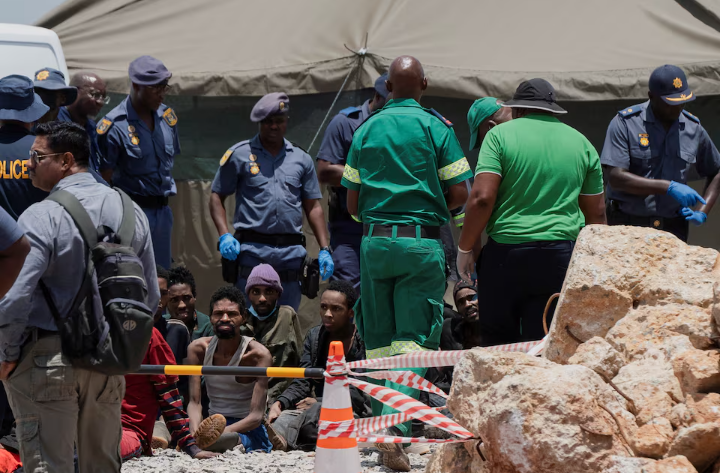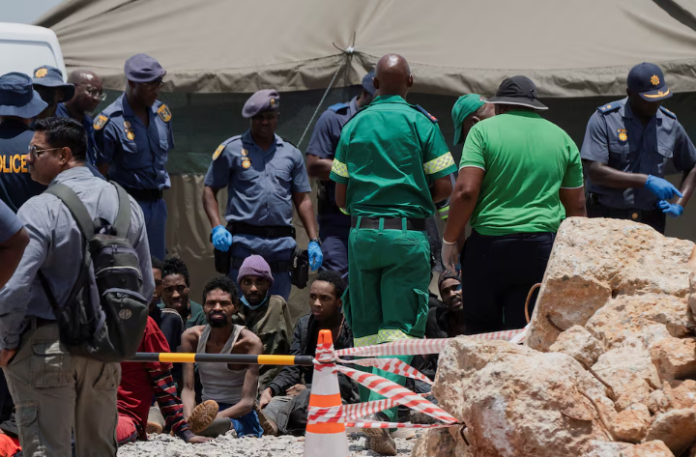A major humanitarian crisis has unfolded in South Africa as at least 78 bodies have been recovered from an illegal gold mine near Stilfontein, southwest of Johannesburg.
The incident has sparked outrage, with trade unions accusing the government of allowing miners to “starve to death” in a brutal crackdown on illegal mining.
Rescue Efforts Reveal a Grim Reality
Since Monday, a court-ordered rescue operation has led to the recovery of 246 survivors—many of whom emerged weak, disoriented, and malnourished. These miners were immediately arrested for illegal mining and immigration violations.
Volunteers who ventured 2 km underground on Wednesday reported seeing no more survivors, but rescue teams continued efforts on Thursday to ensure no one was left behind. Initial fears suggested that hundreds more might still be trapped in the tunnels.
A Crackdown with Deadly Consequences
The South African Federation of Trade Unions has condemned the government’s approach, accusing it of “wilful negligence.” Reports indicate that police had cut off food and water supplies to the mine for months in an attempt to force the miners to surrender.
Mametlwe Sebei, a trade union leader, stated that authorities dismantled the pulley system miners used to transport supplies underground. Desperate to survive, some miners attempted to escape through flooded tunnels, only to perish in the process.
Police, however, have denied any wrongdoing. National spokesperson Athlenda Mathe insisted that authorities never blocked exit routes, arguing that aiding the miners with supplies would have been tantamount to supporting illegal activity.
Illegal Mining: A Deadly Industry

Illegal mining is widespread in South Africa, with thousands of undocumented miners—known as zama zamas—risking their lives to extract gold from abandoned mines. Many of these miners are immigrants from Mozambique, Zimbabwe, and Lesotho, working under dangerous conditions, often controlled by violent criminal syndicates.
According to Mining Minister Gwede Mantashe, illegal mining cost South Africa more than $3 billion last year. He defended the crackdown, calling it a necessary step to protect the country’s economy.
However, criticism continues to mount. The Democratic Alliance, South Africa’s second-largest political party, has called for an independent inquiry into the government’s handling of the crisis.
The Aftermath: Arrests and Unanswered Questions
Since August, police have reported that 1,576 miners managed to escape the mine on their own, all of whom were arrested, with 121 already deported.
Despite the scale of the disaster, only two of the recovered bodies have been identified so far. Families of missing miners are still searching for answers, while rights groups continue to push for accountability.
What Happens Next?
As the rescue operation nears completion, attention is shifting toward the government’s response and the broader issue of illegal mining. Will this tragedy lead to meaningful reforms, or will South Africa continue to see similar disasters in the future?
For now, the country mourns the loss of these miners, many of whom were simply trying to survive in an unforgiving system.



